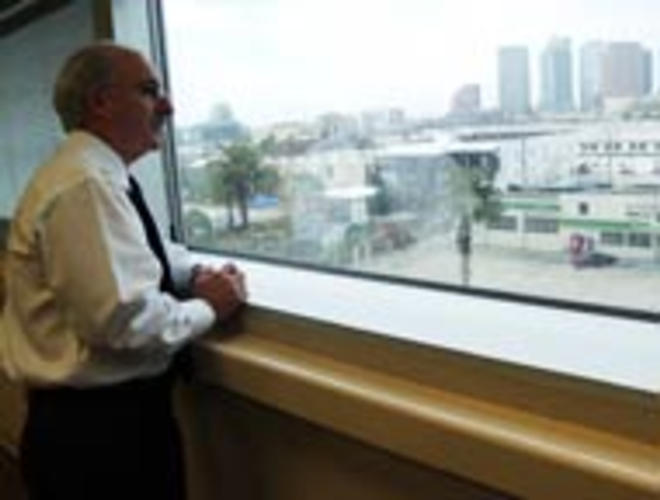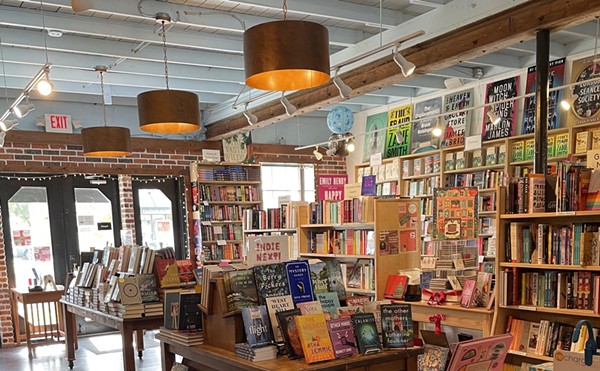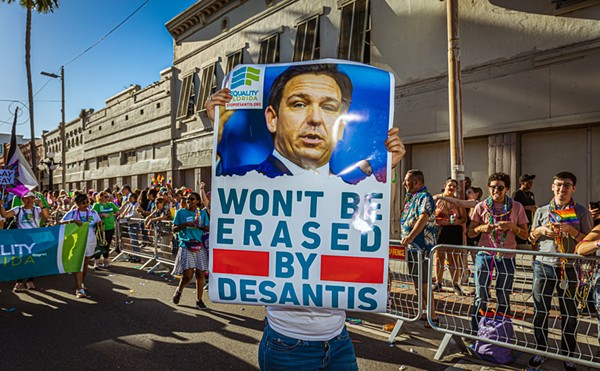My first post-art-school housing was a loft in an old commercial building just west of the Chicago loop. Brick walls, wood floors, exposed wiring, 10-foot-square windows that opened to a fire escape overlooking the El tracks. I know it's not fair to compare 1980s Chicago to 21st-century Tampa - apples to oranges - but until recently the Channel District's down-at-the-heels warehouse chic looked a lot like my old Chicago neighborhood.
The cycle of redevelopment in urban loft neighborhoods usually takes about a decade. (It took that long to price me out of my Chicago loft.) Artists' studios mushroom in cheap, vacant buildings, followed by trendy retail and small businesses. Owners and investors begin to renovate, and the artiness attracts the attention of developers who either carve out loft-apartments or raze the warehouses to make way for new ones. Usually the artists get a little time to establish themselves before being priced out, and the neighborhood gets a chance to retain and build on its character.
The redevelopment of the Channel District has compressed this organic cycle. It's been more like a big bang, skipping all the in-between stages of renewal, going right from dilapidated cold storage to high-rise luxury living.
This was never a residential area. No offense to the urban pioneers who have lived here in the last 15 years, but for most of the last century this district was primarily a working (more or less) port, one that began to decline in the mid-'70s when containerized shipping was developed. The Ybor Channel's warehouses and ship's chandleries became increasingly vacant, mirroring the decline of downtown. Urban planner Michael English remembers Tampa's sorry nickname: "The city that wouldn't grow up until the very last minute."
The '90s brought some signs of hope: the glass-domed Florida Aquarium, the glass-cubed Port Authority building, the pick-up in cruise business. And the past five years saw the streetcar line, the Channelside entertainment complex and big clown-colored parking garages.
But then, in the last 12 months, an authentic building boom kicked in. The old fabric of the neighborhood is being completely covered over.
THE OPTIMIST: Michael English Michael English has worked for preservation and smart development of the Channel District for more than 20 years. He now works for the planning, design and engineering firm Wilson/Miller on the fourth floor of the new Port Authority building, from which he literally oversees the area's development.
English is sure that the neighborhood will be an economic success. He points out the window of the Port Authority to the earthmovers plowing dirt where the Kennedy Street Bridge used to block the skyline view.
He cites San Diego as a good model for the neighborhood's redevelopment. "Twenty years ago it was a dumpy medium-sized city, on a polluted harbor, with a depressed and deserted downtown." That sounds familiar. "They cleaned up the water, and built a light rail system. A new development, Horton Plaza, a vertical mall with six stories of open air at its core, became the anchor of their redeveloped downtown, which is also now full of urban housing."
How long before the condos are filled? "Five years," he answers without a pause. "There is a phenomenon where people's preferences are changing from suburban to urban living. Tired of the congestion, long commutes and the isolation of suburbia, they are returning to the cities, while suburban growth is slowing."
English and Markham's belief in the district's future as a great place to live almost has me convinced. I try going for a walk around the neighborhood, to see what's coming down, going up and hanging on, but the wrecking balls are flying. Bring a hardhat if you go house-hunting anytime soon.
URBAN PIONEERS: Jeff Whipple & The Markhams Displaced artist Jeff Whipple says that the Channel District's transition "is happening at warp speed." Whipple, who had to move from his rented studio, saw himself listed as an "amenity" on the web site of the looming Towers of Channelside planned development. As he was moving his paintings from his home/studio, he overheard one of his new but soon to be ex-neighbors comment, "What I love about this neighborhood is all the artists who live here."
But don't cry for Jeff. He has been given storage space in his former landlord's Channel District building. A few angels remain committed to the arts, good design and their visions of a lively and livable urban neighborhood.
Angels like Kim and Dr. Richard Markham, urban pioneers who lived in and ran an affordable medical clinic in the Channel District until a few weeks ago. They provided low-rent space to artists like Whipple. As early members of the Channel District Council, they steered redevelopment of the area toward a low-rise, walkable, creative environment. The Council works with the city, county and planners to return tax dollars to the neighborhood.
















